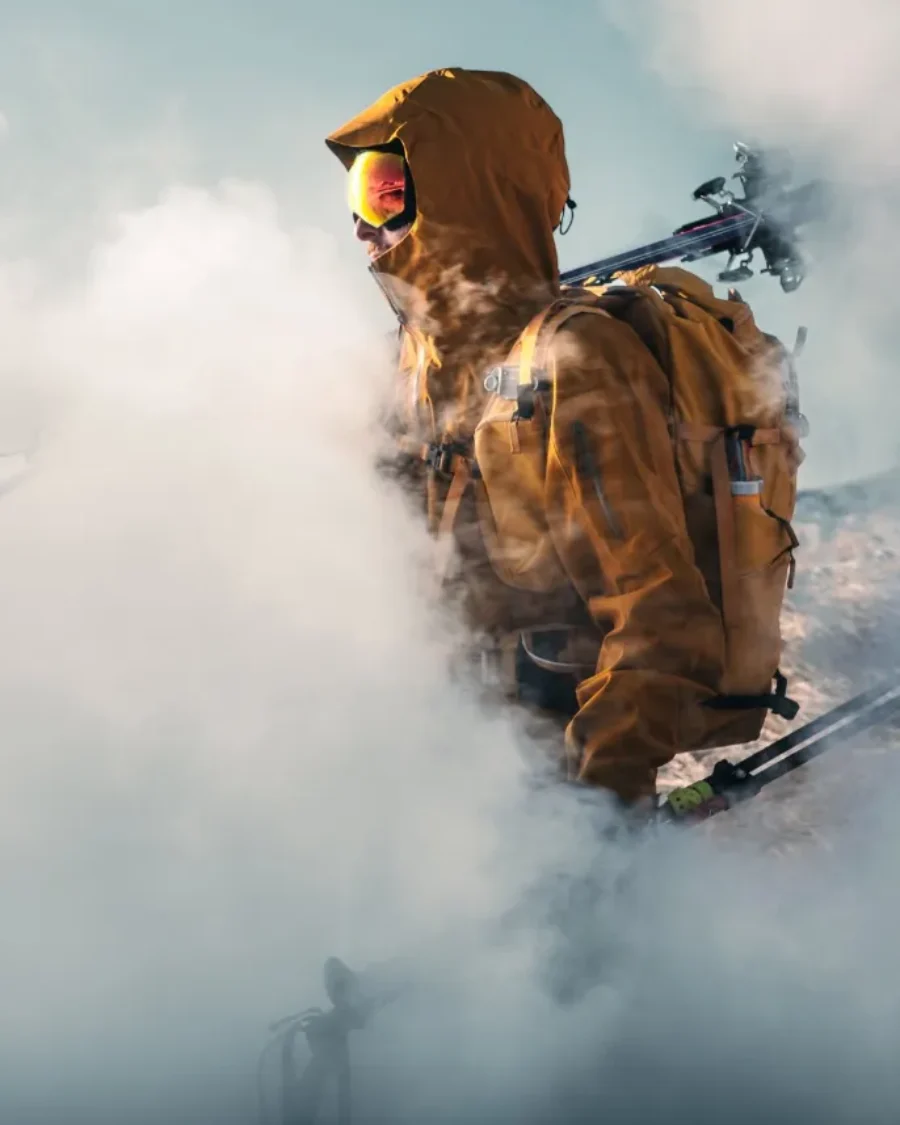The Invisible Architectures of the Wild
The contemporary art landscape, ever-flowing and permeable, often finds its most compelling expressions at the intersection of human creation and untamed nature. Within this dynamic tension, the work of Norbert von Nieman, primarily known as Norris Niman in the world of visual arts and adventure photography, carves out a distinctive and thought-provoking niche. While the name “Norbert Niemann” might evoke associations with a celebrated German author and literary critic, this article focuses on the Swedish-born artist whose visual vocabulary captures the remote, often harsh beauty of the planet’s most extreme environments. Through his evocative photographs and conceptual projects, Norbert von Nieman invites us not merely to observe, but to deeply contemplate our place within nature’s vast, indifferent, yet profoundly beautiful tapestry. His art transcends mere documentation, becoming an elegant and reflective inquiry into the ephemeral nature of human presence against the enduring force of the Earth, mirroring broader cultural and societal discourses on environmental stewardship, memory, and transformation.
Context and Genesis, From Adventure to Artistic Vision
Norbert von Nieman’s artistic journey is inextricably linked to his deep engagement with the wilderness. Born in Sweden, he has made Iceland his home since 2011, immersing himself in its dramatic landscapes. His initial path as an adventure guide was not merely a profession but a crucible for his artistic sensibility, allowing him to traverse and intimately understand the “remote, untamed parts of the world.” This profound connection to nature, the “peace in nature, the harsh north, and the adventurer’s lifestyle,” became the bedrock upon which his photographic and cinematic practice is built. He articulates his ultimate goal as transforming “wild nature into a massive playground” and sharing these grand adventures through his lens, enabling viewers to experience them without physically traveling there.
The foundation of his art lies in a deeply lived experience that transcends mere observation. Norbert von Nieman is not simply a photographer who appreciates nature; he is a “professional adventurer” and “adventure guide.” This background is crucial as it shapes his artistic methodology. His work emerges from a profound, physical engagement with the environment, often under challenging conditions, to reach “wild, remote destinations and offbeat landscapes.” The photographs are thus not just images of nature, but images from a lived experience of its sublimity and harshness. This performative approach, the result of physical and mental endurance, imbues his work with an authenticity and raw power. It suggests a direct link between his adventurous lifestyle and the profound emotional impact of his images. It is a form of embodied cognition, where his physical interaction with the landscape directly informs his artistic expression and thematic concerns.
Artistic Signature, The Scandinavian Simplicity of the Sublime
Norbert von Nieman’s photographic style is instantly recognizable by its distinctive blend of raw power and refined elegance. His work is characterized by “crisp and visually captivating imagery” with “clean edits” and an omnipresent “Scandinavian simplicity.” This aesthetic choice is not a reduction but an amplification, aiming to place his subjects, often monumental natural formations, in “unreal and vast environments that spark emotions in the viewer.” His “North by Nature” collection exemplifies this; it showcases stunning photographs of “majestic mountains and icebergs, flowing lava, mesmerizing rivers, and the giants of the frozen oceans,” all highlighting the “power and splendor of northern nature.” He distills the overwhelming scale of these landscapes into compositions that prioritize “color, contrast and an element that gives the audience emotion!” This deliberate approach elevates his landscape photography beyond mere scenic depiction, transforming it into a contemplative art form that captures the sublime.
The application of “Scandinavian simplicity” to the often chaotic and overwhelming force of nature, such as mountains, lava, and icebergs, creates a fascinating artistic paradox. While “Scandinavian simplicity” typically suggests minimalism and clean lines, Norbert von Nieman employs a reductive aesthetic. This is not a limitation but a strategic choice that amplifies the core emotional and visual impact of the natural subject. By stripping away superfluous elements and focusing on essential forms, light, and contrast, he allows the viewer to confront the sublime directly, unburdened by visual noise. This deliberate distillation transforms potentially overwhelming scenes into meditative compositions that make the immense accessible and profoundly moving. Simplicity thus becomes a conduit for deeper emotional resonance, underscoring the artist’s ability to find clarity and quiet grandeur amidst monumental natural forces. This approach elevates his work from mere landscape photography to a profound exploration of humanity’s relationship with the vastness of nature.
The “Disappearing Museums” Project, A Dialogue with Transience and Memory
One of the most conceptually rich projects associated with Norbert von Nieman is the book “Disappearing Museums.” In this pivotal work, his role as a photographer is central to an ambitious interdisciplinary exploration. The book uniquely combines landscape photography with architectural sketches of museums that were never realized. What makes this project particularly compelling is its material and conceptual audacity: these twelve blueprints, overlaid onto images of the remote Icelandic desert, are conceived as life-size drafts made from “salt core, a biodegradable material that naturally dissolves when exposed to rain.” This choice of material and location imbues the project with profound thematic depth, directly addressing concepts of transience, transformation, and the temporary nature of human constructs contrasted with the enduring, yet ever-changing, nature of the environment. It invites a dialogue about the fragility of cultural memory and the relentless forces of nature.
Museums are traditionally understood as bastions of permanence, designed to preserve cultural heritage for posterity. By proposing “unrealized museums” built from “salt core, a biodegradable material that naturally dissolves when exposed to rain” and placed in the “remote Icelandic desert,” Norbert von Nieman creates a powerful, multi-layered metaphor. This project directly challenges the conventional notion of monumentality and enduring human legacy. It suggests that even our most revered cultural institutions are ultimately ephemeral in the face of nature’s overwhelming power and cyclical processes. The act of designing structures that are meant to disappear is a profound commentary on the impermanence of human endeavors, the fragility of memory, and perhaps a subtle environmental statement about our fleeting impact on landscapes compared to their inherent resilience. It compels viewers to question what truly endures and how we define “cultural significance” in a world of constant flux, prompting a re-evaluation of our relationship with built environments and nature.
The “Disappearing Museums” project is also not solely a photographic endeavor; it is a collaborative work that involves architects (e.g., atelier jansen + knäbel, Bureau Spectacular) and engages with concepts from architecture, material science, and environmental philosophy. The choice of “unrealized museums” speaks to architectural theory and the liminal space between concept and reality. The use of “salt core” as a biodegradable material introduces a performative, time-based element, where the artwork itself is designed to undergo a transformation, physically dissolving back into the environment. This deliberate integration of diverse disciplines and conceptual layers positions Norbert von Nieman as a sophisticated conceptual artist. His role as a photographer is crucial in capturing these ephemeral visions, effectively documenting a process of becoming and un-becoming, thereby extending his practice beyond static imagery into the realm of environmental art and site-specific commentary.
Reception and Discourse, A Global Lens on Nature’s Grandeur
Norbert von Nieman’s (Norris Niman’s) distinctive artistic vision has garnered significant acclaim, establishing him as a prominent voice in contemporary adventure and landscape photography. He is celebrated as a “Nikon Creator,” a testament to his technical mastery and influence within the photography community. His work has been featured in prestigious publications such as Vogue Scandinavia, Condé Nast Traveler, National Geographic, CNN, and Forbes, indicating a broad appeal that extends beyond niche art circles into mainstream cultural discourse. Although he “doesn’t really do photo competitions,” he has received notable accolades, including a 2nd Prize at the HIPA International Photography Awards and a 1st Prize in the Wix Adventure Photography competition. Beyond his fine art prints, which include the popular “North by Nature” collection, he also engages in commercial photography and film for global clients, delivering “premium quality collections with clean edits, a Scandinavian simplicity, and a sense of adventure.” Furthermore, his commitment to sharing his passion is evident in his role as an experienced adventure guide, teacher, and public speaker, leading workshops, tours, and events in the high north. This multifaceted engagement underscores his influence and contributes to broader discussions about environmental art, the human relationship with the wild, and the evolving role of photography in a globalized world.
The information confirms that Norbert von Nieman (Norris Niman) is not only an acclaimed artist but also a commercially successful photographer, collaborating with major brands such as Nikon, DJI, Arc’teryx, Toyota, Kia, and Hertz. This commercial engagement does not detract from his artistic integrity but rather appears to be a symbiotic relationship. His ability to deliver “crisp and visually captivating imagery” with a “Scandinavian simplicity” for commercial clients is an extension of his core aesthetic, not a departure from it. This suggests that his unique artistic voice and adventurous approach are precisely what make him sought after in the commercial realm. The financial and logistical support derived from these collaborations likely enables him to pursue more ambitious, time-consuming, and remote artistic projects, such as “Disappearing Museums,” which might not be commercially viable on their own. This challenges the traditional notion of a strict dichotomy between “fine art” and “commercial work,” illustrating how, in contemporary practice, one can effectively fuel the other, allowing the artist greater freedom and reach.
The Echo of the Untamed
Norbert von Nieman’s artistic practice, through the captivating lens of Norris Niman, offers a profound and timely reflection on the relationship between humanity and the untamed world. From the immediate engagement of his adventure photography, capturing the raw, elemental forces of the Arctic, to the conceptual audacity of the “Disappearing Museums,” which challenges our notions of permanence and legacy, his work consistently invites deeper contemplation. He does not merely document landscapes; he interprets them, imbuing them with a “Scandinavian simplicity” that paradoxically amplifies their sublime power and emotional resonance. In an era increasingly defined by digital interfaces and urban sprawl, Norbert von Nieman’s art serves as a vital reminder of Earth’s enduring grandeur and our own ephemeral presence within it. His images resonate far beyond the visual, reflecting a universal human yearning for connection with the wild, prompting us to consider not only what we build, but also what we allow to decay, and what ultimately endures in the vast, unfolding narrative of time and nature. His contribution lies in his ability to make visible the invisible architectures of the wild, transforming the fleeting moment into an enduring question.









